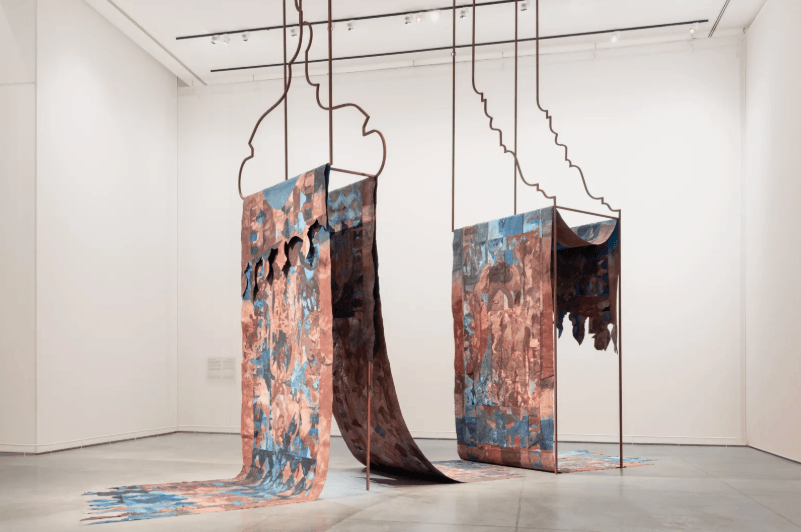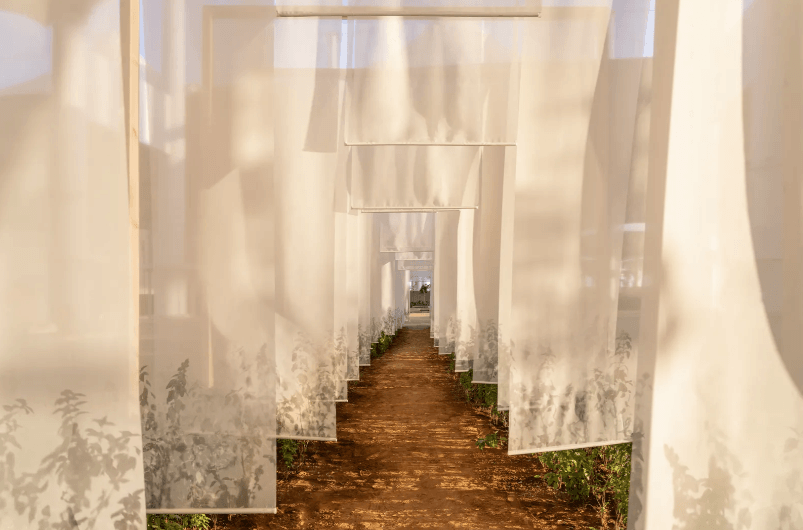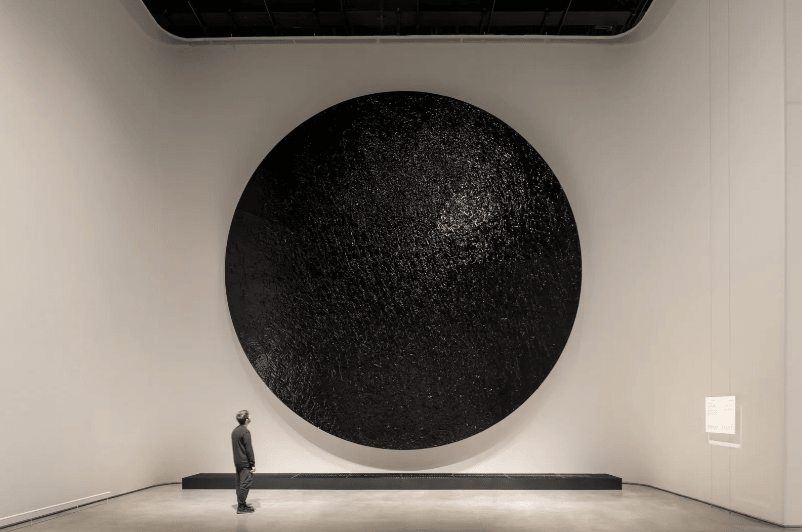Jeddah: Under the soaring canopy of Jeddah’s Western Hajj Terminal at King Abdulaziz International Airport, the Islamic Arts Biennale 2025 unfolds as a profound dialogue between faith, memory, and artistic mastery. Organised by the Diriyah Biennale Foundation (DBF), the event transforms the 1978-built terminal, long a gateway for pilgrims to Makkah, into a sanctuary of cultural reflection. This year’s theme, وَمَا بَيۡنَهُمَا (And All That Is in Between), taken from the Quran, invites visitors to contemplate the space between heaven and earth, spirit and matter, the seen and unseen.

Stepping Into AlBidayah – The Beginning
The journey opens in AlBidayah, the first of four curated zones, where the hum of faint Quranic recitation forms a meditative backdrop. Visitors are met by an intricately carved madraj, once used to ascend into the Kaaba itself, and sacred textiles that foreshadow the heart-stirring centrepiece ahead. These artefacts evoke centuries of devotion and artistry, grounding the visitor in a sense of historical continuity before leading them to an unprecedented sight.

The Kiswah – A Rare and Reverent Encounter
Suspended in quiet majesty are the four black-and-gold panels of the kiswah that clothed the Kaaba in AH 1445 / 2023–24 CE. Traditionally replaced annually and distributed in pieces to the devout, this complete set’s presence outside Makkah is a rarity of deep spiritual resonance. The scenography by renowned architecture firm OMA ensures the cloth remains just out of reach - honouring its sanctity while allowing intimate visual engagement. This year’s presentation also marks the centenary of the kiswah’s production in Makkah al-Mukarramah, tracing its evolution from reed mats and leather to today’s silk and gold.


Light Upon Light – The Glass Qur’an
In a luminous interpretation of divine revelation, British architect and artist Asif Khan presents The Glass Qur’an. Inspired by the verse “Light upon Light” (24:35), the work comprises 604 hand-gilded glass folios in 24-carat gold. The translucent pages capture and refract light, inviting the viewer into a shifting relationship with the sacred text. For Khan, glass embodies the fragility of revelation while gold symbolises eternal resonance, bridging earthly materials with celestial meaning.

AlMuqtani – Homage to Mastery
The AlMuqtani (Homage) zone offers treasures from two of the world’s most esteemed Islamic art collections. From Sheikh Hamad bin Abdullah Al Thani’s holdings comes the Mahin Banu Dish, a Ming porcelain vessel that travelled through Safavid and Mughal courts, once in the possession of Emperor Shah Jahan. From Rifaat Medhat Sheikh El Ard’s collection emerge gleaming arms and armour, narrating the chivalric traditions of the Islamic world. These objects, beyond their beauty, map centuries of cultural exchange and refined craftsmanship.


AlMidhallah – The Canopy of Contemplation
Stepping outside into AlMidhallah, visitors encounter installations inspired by the Islamic garden,a symbolic meeting place of earthly and divine beauty. Here, sustainability and spirituality converge. Among the most evocative works is Fatma Abdulhadi’s I Wish You in Heaven, a scent-based installation using suspended basil plants, a fragrant symbol of remembrance in Muslim tradition. The gentle release of aroma invites personal reflection and remembrance of loved ones who have passed.


Faith, Beauty, and the Space Between
As the Biennale’s journey draws to a close, its theme, And All That Is in Between, lingers like an unanswered prayer. The exhibition offers not just a survey of Islamic art but a living testament to its evolution, shaped by the pull of history and the pulse of the present. Here, under the vast canopy once filled with pilgrims, art becomes both a bridge and a mirror, reflecting humanity’s enduring quest for meaning.


Islamic Arts Biennale 2025 is open until 25 May. More details: biennale.org.sa
